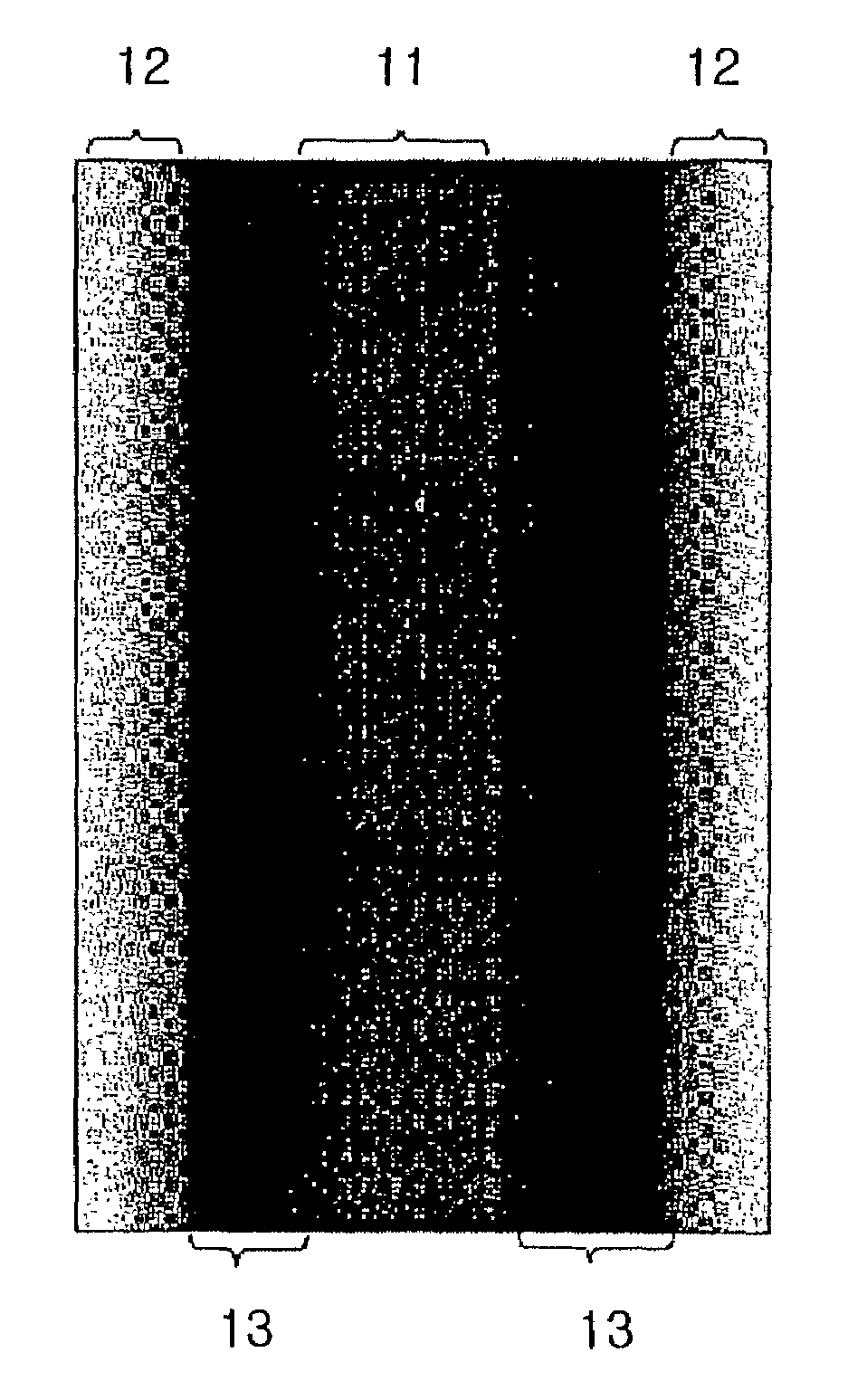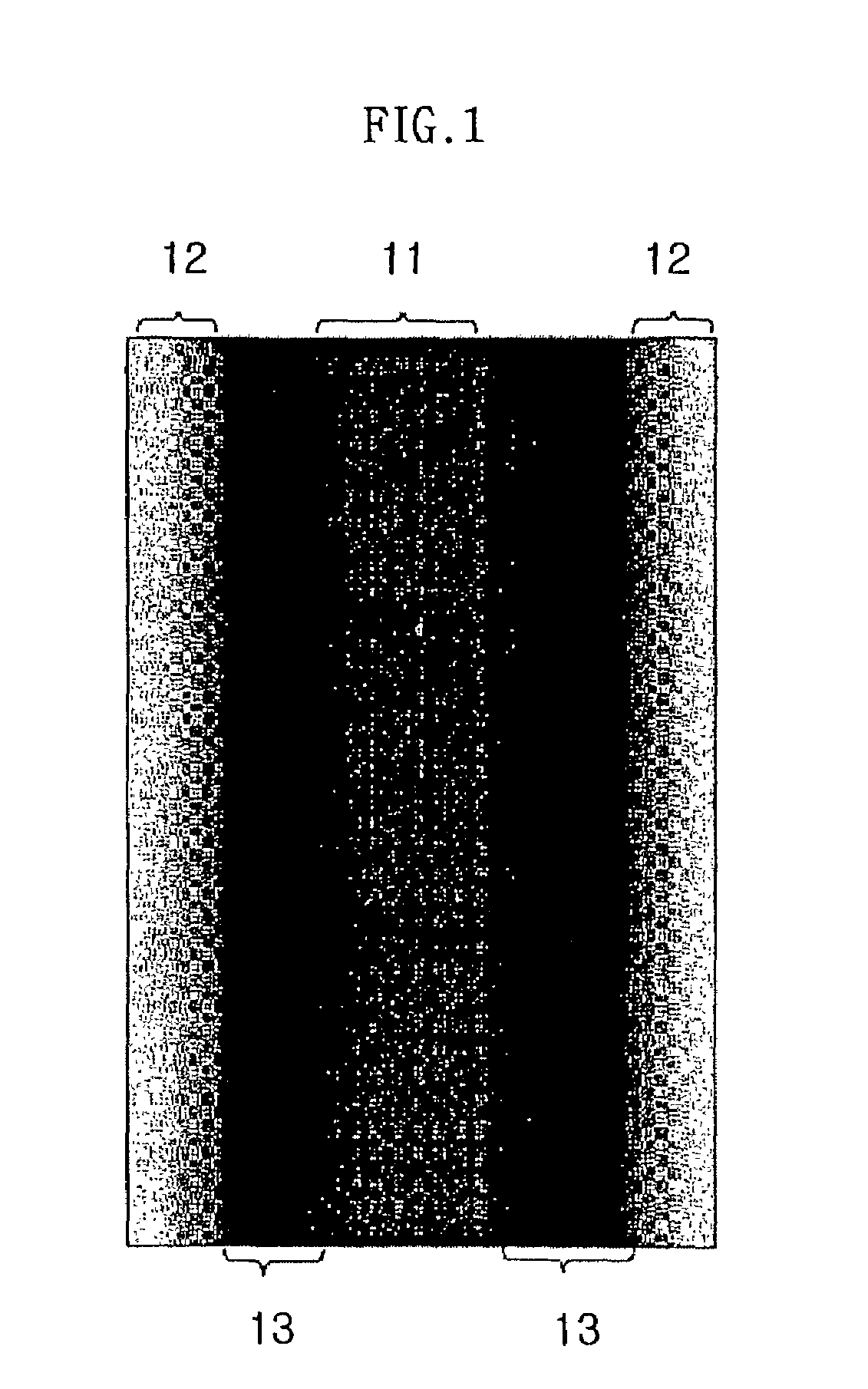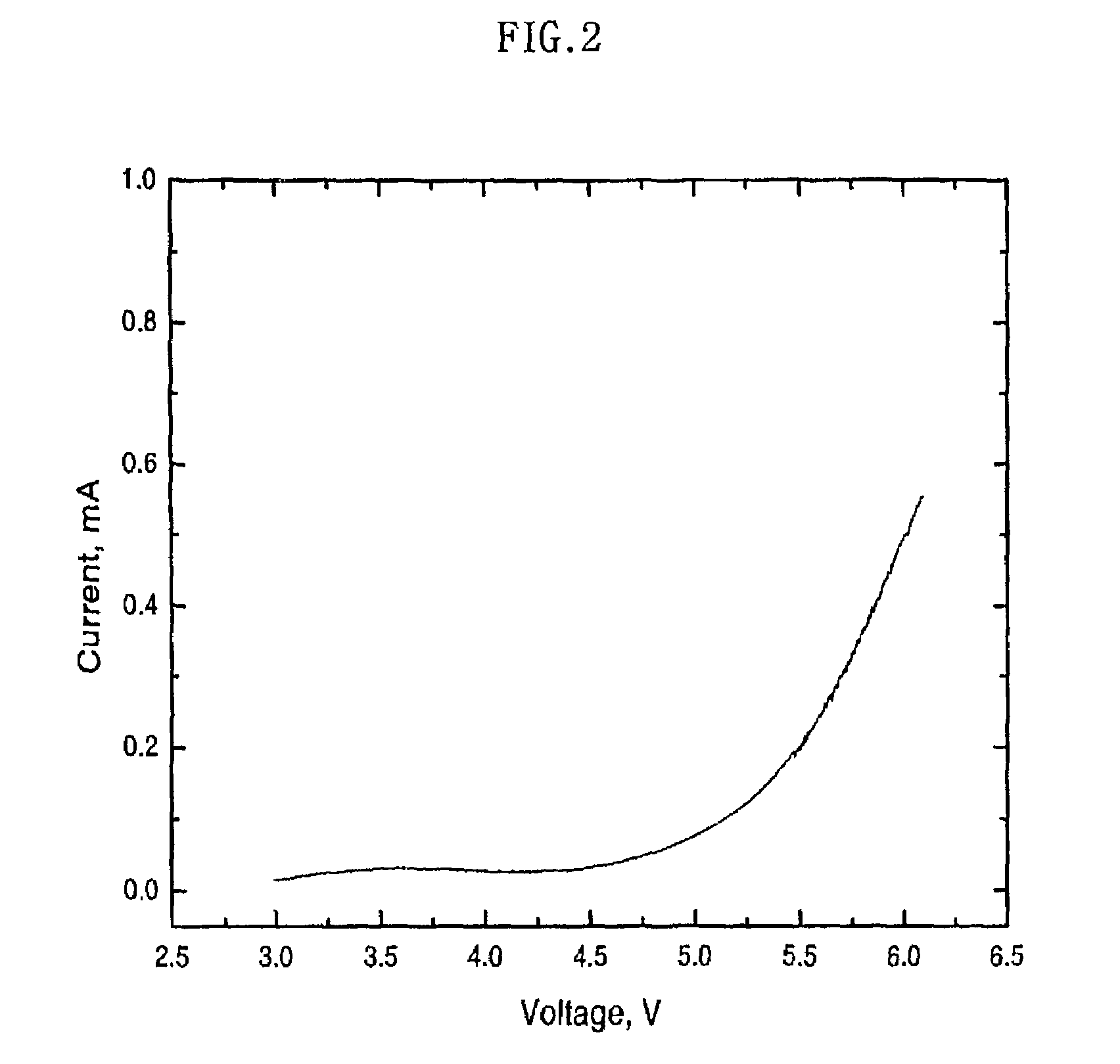Multi-component composite film method for preparing the same
a composite film and multi-component technology, applied in the field of multi-component composite film, can solve the problems of liquid electrolyte leakage out of the polymer separator, insufficient ionic conductivity of solid electrolyte to be used in batteries, and increase in thickness, so as to achieve good wet-out rate of electrolyte, good ionic conductivity and mechanical properties
- Summary
- Abstract
- Description
- Claims
- Application Information
AI Technical Summary
Benefits of technology
Problems solved by technology
Method used
Image
Examples
example 1
[0091]A high crystalline polypropylene was used as a support layer film, and a polyvinylidenefluoride-chloro-tri-fluoroethylene copolymer (a product of Solvay Polymer Corp.) was used as a gellable polymer layer, in order to prepare a multi-component composite film by the following procedure.
[0092](Preparation of a Precursor Film)
[0093]A high crystalline polypropylene was used for a material of a precursor film. It had a melt index of 2.0 g / 10 minutes, a density of 0.91 g / cc, a melting point of 166.5° C. which was measured with DSC (Differential Scanning Calorimeter), a crystallization temperature of 116.5° C., a crystallinity of 57%, an isotacticity of 98% which was measured with C13 nuclear magnetic resonance (NMR), and an atactic fraction of about 2% which was measured after being dissolved in xylene. The precursor film was prepared from the high crystalline polypropylene with use of a single screw extruder equipped with a T-die and a take-up device. The extrusion temperature and ...
example 2
[0102](Preparation of a Percursor Film)
[0103]A precursor film was prepared in the same manner as in Example 1.
[0104](Coating)
[0105]A release paper was dip-coated with a gellable polymer solution wherein polyvinylidenefluoride-chlorotrifluoro ethylene copolymer 32008 (a product of Solvay Polymer Corp.) was dissolved in an acetone, so that a gellable polymer layer was prepared. The coating was performed under air while maintaining 60% relative humidity, and the acetone was vaporized at the same condition of 60% relative humidity.
[0106](Heat-melting)
[0107]2 pieces of the gellable polymer layer were desorbed from the release film, 2 pieces of the gellable polymer layer were located on both sides of the precursor film, and they were placed in a heated laminator of which the temperature was 140° C., so that the gellable polymer layer was heat-melted on both sides of the precursor film.
[0108](Stretching)
[0109]The heat-melted film was mono-axially stretched to 50% of the stretching ratio ba...
example 3
[0112](Preparation of a multi-component composite film comprising high crystalline polypropylene / polyvinylidenefluoride-chlorotrifluoroethylene copolymer that was prepared by a preparation process comprising ion-beam irradiation)
[0113]A multi-component composite film was prepared in the same manner as in Example 1, except that an ion-beam was irradiated on the precursor film before coating the precursor film with the gellable polymer solution. The precursor film was placed in a vacuum chamber while keeping the pressure ranging from 10−5 to 10−6 torr, argon cations (Ar+) were irradiated on both sides of the precursor film with an ion gun, and simultaneously oxygen used as an reactive gas was injected into the chamber in an amount of 4 ml / cm2 in order to treat the precursor film surface. The energy of the ion beam was 0.5 keV, and the ion irradiation amount was 1016 ions / cm2.
[0114]After the ion-beam irradiation, a multi-component composite film was prepared in the same manner as in Ex...
PUM
| Property | Measurement | Unit |
|---|---|---|
| pore size | aaaaa | aaaaa |
| pore size | aaaaa | aaaaa |
| crystallization temperature | aaaaa | aaaaa |
Abstract
Description
Claims
Application Information
 Login to View More
Login to View More - R&D
- Intellectual Property
- Life Sciences
- Materials
- Tech Scout
- Unparalleled Data Quality
- Higher Quality Content
- 60% Fewer Hallucinations
Browse by: Latest US Patents, China's latest patents, Technical Efficacy Thesaurus, Application Domain, Technology Topic, Popular Technical Reports.
© 2025 PatSnap. All rights reserved.Legal|Privacy policy|Modern Slavery Act Transparency Statement|Sitemap|About US| Contact US: help@patsnap.com



